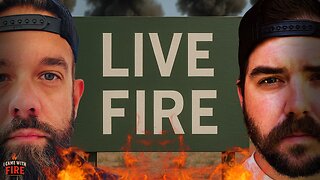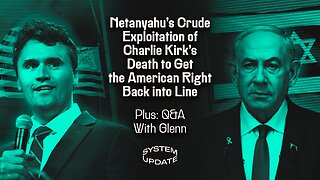Premium Only Content

Torah Code | Isaiah 59
#Isaiah59 #TorahCode #BiblicalPatterns #ScriptureLogic #PropheticStructure #TriadicThinking #TheologyOfSystems #SpiritualDiscernment #BiblicalExegesis #HiddenAffirmation #RelationalTheology #JusticeAndIntegrity #ReligiousFailure #RestorationLogic #OldTestamentAnalysis #PropheticVoice #CollapseAndRebirth #PatternRecognition #ScriptureStudy #WisdomInStructure
What if prophecy isn’t just poetry, but structure—an architecture of thought revealing how distortion emerges and how restoration begins? Isaiah 59 doesn’t just indict; it unfolds. Behind its harshest language lies a hidden order, and when we learn to read that order, we gain more than interpretation—we gain discernment.
The chapter opens not with judgment, but affirmation: “Surely the arm of the Lord is not too short to save, nor his ear too dull to hear.” This is the truth—God is near and responsive. But what follows is not contradiction. It’s a descent. Verse 2 describes a stable but misaligned condition: sin that veils God’s face, not because God has turned away, but because the relationship has warped. Presence remains. Communication breaks.
Then comes verse 3. The people respond—but not with rebellion. With religion. They sacrifice, moralize, preach. Their hands, fingers, lips, and tongues are fully engaged. But the more they act, the more they confirm the disconnection. Their system reinforces itself—a sincere, self-perpetuating distortion. This is not wickedness for its own sake. It is misdirected faith in full operation.
Verse 4 marks the breakdown. Justice is no longer sought. Integrity can no longer speak. Argument is no longer true. The structure begins to collapse—not because people stopped trying, but because their efforts had no grounding. The system consumes itself, giving birth not to restoration, but to evil. Not from malice, but from misalignment. The feedback turns negative.
These verses are not just a warning—they are a map. They reveal a natural progression seen throughout scripture: affirmation, misalignment, degeneration. But this is not just a prophetic pattern. It is a human one. It arises in thought, in faith, in speech, in institutions. These verses expose it. They do not end with despair. They end with clarity: a failed system is not the end; it is the clearing before something true can emerge.
The insight that unlocks the chapter is this: these patterns were not imposed. They arose organically as the authors worked through the logic of disconnection and recovery. This is what gives scripture its coherence—not external structure, but discovered structure. The prophets were not theoreticians. They were diagnosticians. What they saw, they traced, and what they traced, we can now learn to follow.
Torah Code is not a claim of secret knowledge. It is a call to structured discernment. To recognize that every collapse contains a buried affirmation, and every system carries within it the key to its redirection—if we know how to read it. Isaiah offers more than condemnation. He offers a logic. And for those who persist in reading carefully, the way forward is already written.
-
 LIVE
LIVE
Badlands Media
7 hours agoOnlyLands Ep. 24
3,044 watching -
 2:27:53
2:27:53
TheSaltyCracker
3 hours agoGot Him ReeEEStream 9-12-25
206K180 -
 52:11
52:11
Sarah Westall
5 hours agoBread and Circus Keeps you Financially Ignorant – Its Better for the Elites w/ Chris Russo
25.9K1 -
 LIVE
LIVE
I_Came_With_Fire_Podcast
11 hours agoFriday Night Live Fire
227 watching -
 LIVE
LIVE
Flyover Conservatives
13 hours agoFrom Demonic Deception to Divine Direction: Sid Roth’s Radical Encounter With God | FOC Show
573 watching -
 LIVE
LIVE
Chrissie Mayr
1 hour agoChrissie Mayr Reactions to Charlie Kirk, Liberal Celebrations, and More
258 watching -

AlaskanBallistics
1 hour ago $0.66 earnedRemembering Charlie Kirk
12.1K1 -
 1:23:27
1:23:27
Glenn Greenwald
4 hours agoNetanyahu’s Crude Exploitation of Charlie Kirk’s Death to Get the American Right Back into Line; Plus: Q&A With Glenn on Charlie Kirk's Assassination, Online Civil Discourse, and More | SYSTEM UPDATE #514
175K101 -
 4:10:25
4:10:25
Nerdrotic
7 hours ago $14.65 earnedCulture Is VITAL! Streaming BUST, Warner Bros. Buyout | Friday Night Tights 371 with Vara Dark
198K21 -
 1:02:32
1:02:32
BonginoReport
6 hours agoCharlie Kirk’s Assassin In Custody, Details Emerge - Nightly Scroll w/ Hayley Caronia (Ep.133)
183K177